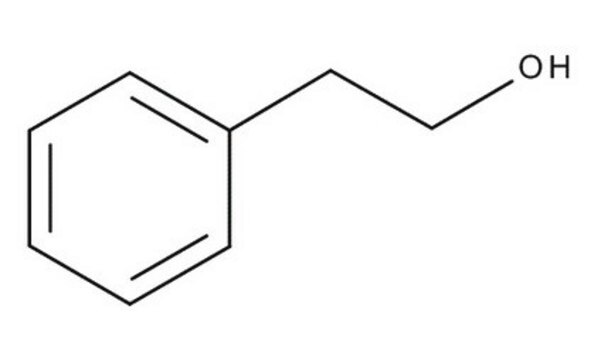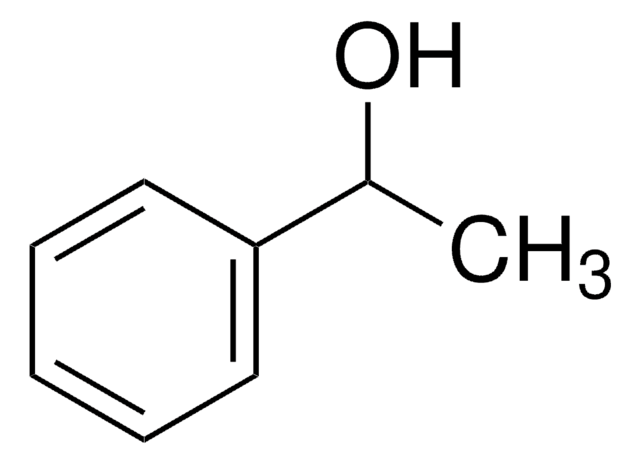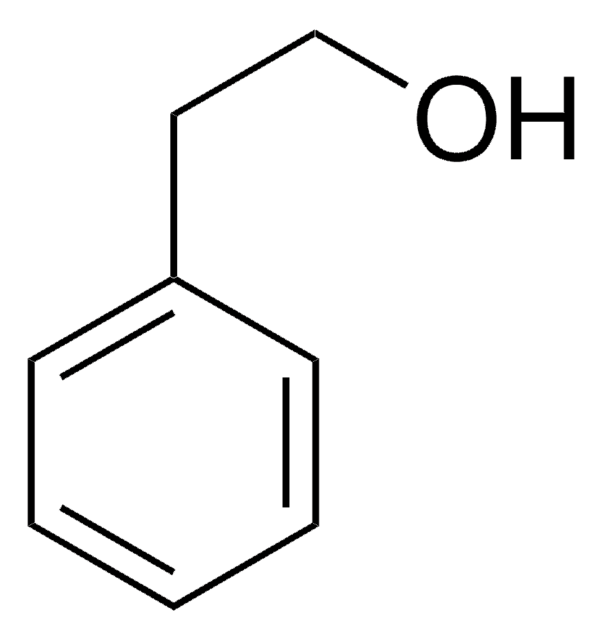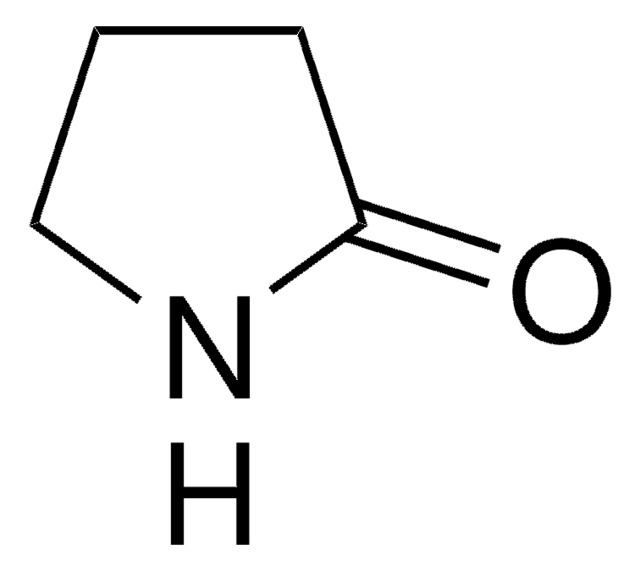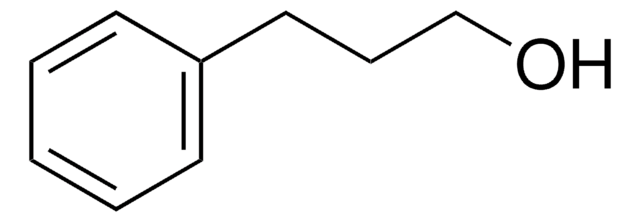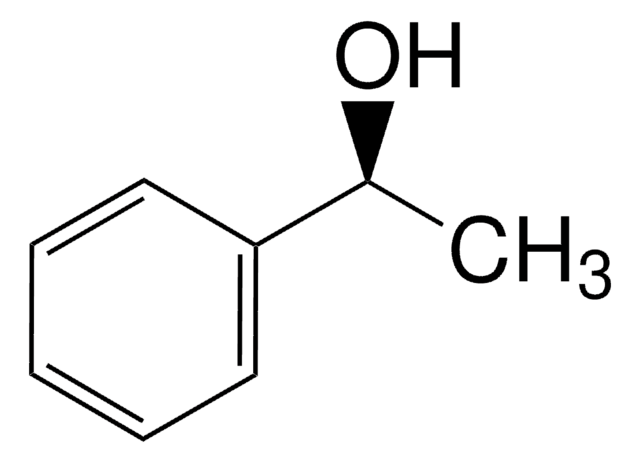77861
2-Phenylethanol
≥99.0% (GC)
Synonym(s):
β-PEA, 2-Phenylethyl alcohol, Benzyl carbinol, PEA
About This Item
Recommended Products
vapor density
4.21 (vs air)
Quality Level
vapor pressure
1 mmHg ( 58 °C)
assay
≥99.0% (GC)
form
liquid
refractive index
n20/D 1.5317 (lit.)
bp
219-221 °C/750 mmHg (lit.)
mp
−27 °C (lit.)
density
1.020 g/mL at 20 °C (lit.)
SMILES string
OCCc1ccccc1
InChI
1S/C8H10O/c9-7-6-8-4-2-1-3-5-8/h1-5,9H,6-7H2
InChI key
WRMNZCZEMHIOCP-UHFFFAOYSA-N
Looking for similar products? Visit Product Comparison Guide
Related Categories
General description
Application
- The bacteriostatic activity of 2-phenylethanol derivatives correlates with membrane binding affinity: This study examines how the bacteriostatic properties of 2-phenylethanol derivatives are influenced by their affinity for binding to membranes, providing insights into their antimicrobial effectiveness (IS Kleinwächter et al., 2021).
- Anti-depressive-like effect of 2-phenylethanol inhalation in mice: This study explores the neuropsychological effects of inhaling 2-phenylethanol, suggesting potential therapeutic applications for depression (H Ueno et al., 2019).
recommended
signalword
Warning
hcodes
Hazard Classifications
Acute Tox. 4 Oral - Eye Irrit. 2
Storage Class
10 - Combustible liquids
wgk_germany
WGK 1
flash_point_f
215.6 °F - closed cup
flash_point_c
102 °C - closed cup
ppe
Eyeshields, Faceshields, Gloves, type ABEK (EN14387) respirator filter
Certificates of Analysis (COA)
Search for Certificates of Analysis (COA) by entering the products Lot/Batch Number. Lot and Batch Numbers can be found on a product’s label following the words ‘Lot’ or ‘Batch’.
Already Own This Product?
Find documentation for the products that you have recently purchased in the Document Library.
Customers Also Viewed
Protocols
Information on the Amide bond and the Catalytic Amide Bond Formation Protocol. Amidation of amines and alcohols. The amide bond, an important linkage in organic chemistry, is a key functional group in peptides, polymers, and many natural products and pharmaceuticals.
Our team of scientists has experience in all areas of research including Life Science, Material Science, Chemical Synthesis, Chromatography, Analytical and many others.
Contact Technical Service